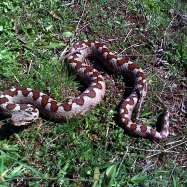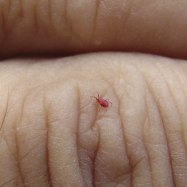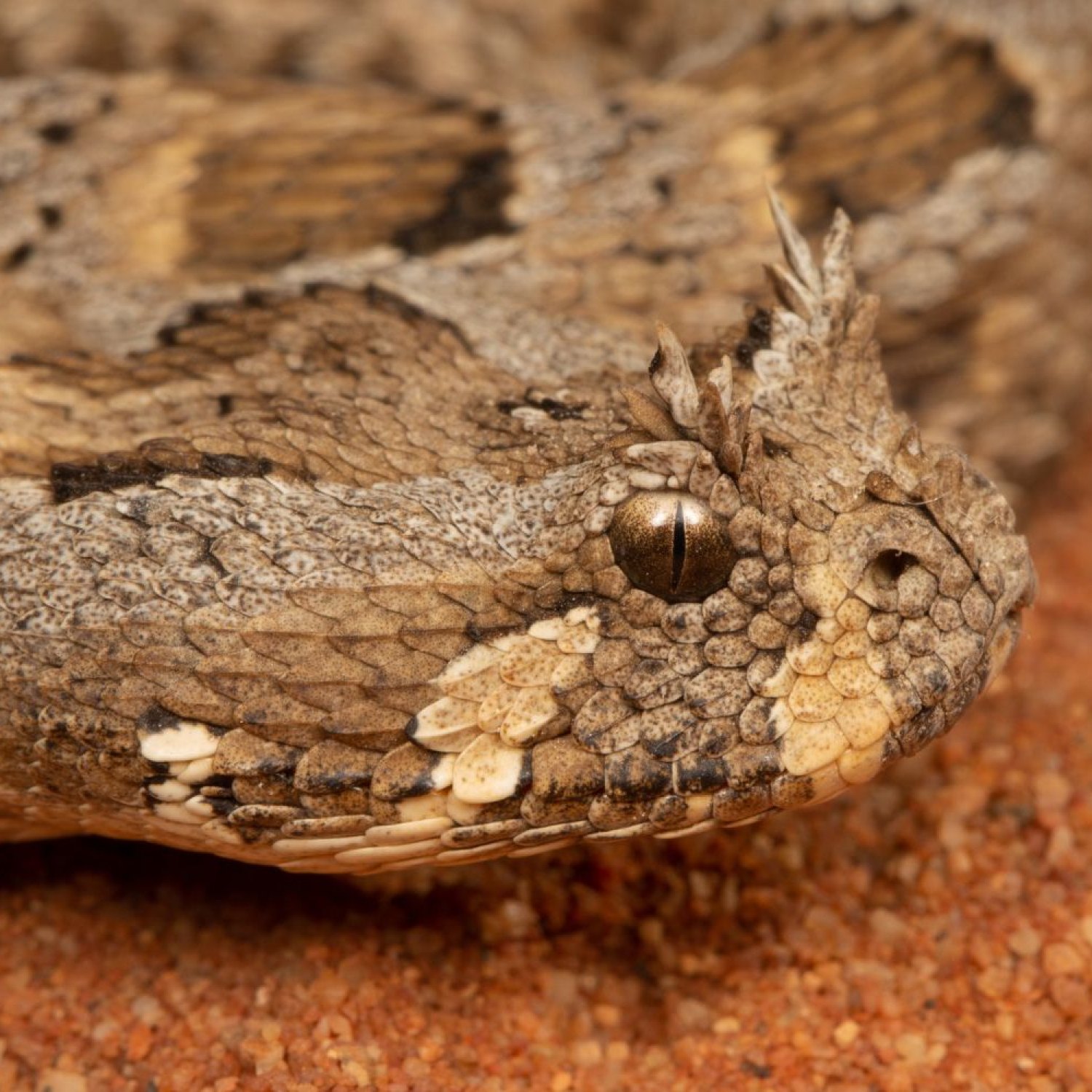
Horned Adder
Up to 30 centimeters
Meet the Horned Adder, a short and stocky reptile found in the southwestern regions of Africa. With a length of up to 30cm, this member of the Viperidae family is named after the prominent horns above its eyes. Despite its small size, the Horned Adder is a highly venomous predator. Keep your distance and admire it from afar. #HornedAdder #AfricanReptiles #Viperidae
Animal Details Summary:
Common Name: Horned Adder
Kingdom: Animalia
Habitat: Deserts and sandy plains
The Mysterious and Deadly Horned Adder of Southern Africa
Deep in the heart of the deserts and sandy plains of Southern Africa, a creature lurks in the shadows, waiting for its prey. With its unique appearance and deadly venom, the Horned Adder (Bitis caudalis) stands out among the vast and harsh landscapes of its habitat. While its name may make it sound like a mythical creature, the Horned Adder is a real and fascinating animal that is both feared and revered. In this article, we will explore the unique features and behaviors of the Horned Adder, and discover why it is truly a one-of-a-kind species Horned Adder.The Basics: Classification and Distribution
Before we dive into the details of the Horned Adder, let us first understand its scientific classification. Like all living creatures, the Horned Adder belongs to the Kingdom Animalia, the phylum Chordata, and the class Reptilia. Within the order Squamata, it belongs to the family Viperidae, which includes other venomous snakes such as vipers and rattlesnakes.The Horned Adder is native to Southern Africa, specifically in the countries of Namibia, Angola, Zimbabwe, and South Africa. Within these countries, they are mostly found in the southwestern regions, which are characterized by vast deserts and sandy plains. This unique combination of habitat and geographical distribution has made the Horned Adder a true desert dweller.
Appearance and Coloration
The Horned Adder is a small snake, with an average length of 15-20 centimeters and a maximum length of 30 centimeters. It has a short and stocky body, with a triangular-shaped head and small eyes. But perhaps its most distinguishing feature is the pair of long and curved horns on its head, which gives the snake its famous name Hognose Snake.The coloration of the Horned Adder perfectly camouflages it against the light-colored sand of its habitat. It is mostly Pale sandy brown, with darker brown markings that resemble small triangles or diamonds. This unique coloration not only helps the Horned Adder blend in with its surroundings but also makes it difficult for predators to spot it.
Feeding Behavior: Lying in Wait
As an ambush predator, the Horned Adder has a unique feeding method. It uses its excellent camouflage and remains motionless in the sand, waiting for unsuspecting prey to pass by. When prey, mostly rodents and lizards, wanders too close, the Horned Adder quickly strikes and injects its venom into the victim. The venom of the Horned Adder is potent and can kill their prey almost instantly.Once the prey is immobilized, the Horned Adder uses its retractable fangs to swallow the prey whole. The size of the prey it can eat is limited by the narrowness of its jaws, but the Horned Adder has no trouble hunting smaller animals in its surroundings.
The Deadly Venom
One of the most fascinating aspects of the Horned Adder is its venom, which is a deadly mixture of proteins and enzymes. Like all other vipers, the Horned Adder has long and hollow fangs through which it injects its venom. The venom of the Horned Adder is highly toxic and can cause severe tissue damage and even death in humans.What makes the venom of the Horned Adder unique is its composition. While most vipers have a hemotoxic venom that targets the victim's circulatory system, the venom of the Horned Adder is mainly neurotoxic. This means it attacks the victim's central nervous system, causing paralysis and respiratory failure. The potency of the Horned Adder's venom is what makes it a truly feared species in its habitat.
Adaptation for Survival
Living in such a harsh environment has forced the Horned Adder to adapt and evolve in unique ways. Its coloration and camouflage have already been mentioned, but that is not the only survival mechanism of this fascinating reptile. Here are some other features that help the Horned Adder thrive in its environment:- Heat Sensing Pits: The Horned Adder, like other vipers, has heat sensing pits on its head that help it detect warm-blooded prey, even in the dark.
- Retractable Fangs: Unlike other venomous snakes, the Horned Adder's fangs are not always present but instead can be retracted when not needed. This adaptation helps keep the fangs sharp and ready for hunting.
- Burrowing ability: When not hunting or basking in the sun, the Horned Adder is often found burrowing in the sand for shelter from the harsh elements.
Myths and Misconceptions
Like many other animals, the Horned Adder has fallen victim to myths and misconceptions that have been perpetuated over the years. For example, there is a common belief that the Horned Adder can shoot venom from its eyes, similar to the fabled Basilisk. This is entirely false, as the Horned Adder's venom can only be injected through its fangs.Another myth is that the Horned Adder is an aggressive and hostile snake that attacks unprovoked. In reality, the Horned Adder is a shy and reclusive creature that only strikes when threatened or disturbed. Like most other snakes, it will try to escape from humans rather than engage in an attack.
The Conservation Status
The Horned Adder is a species of least concern according to the International Union for Conservation of Nature (IUCN). While its population is not significantly threatened, there are still some conservation concerns for this species. The main threats to the Horned Adder include habitat destruction and degradation due to human activities and unintentional killings by people who fear the snake.It is crucial to raise awareness about the importance of preserving the natural habitat of the Horned Adder and to educate people about the true nature of this unique creature.
Conclusion
In conclusion, the Horned Adder is a fascinating animal that is as mysterious as it is deadly. Its unique appearance, feeding behavior, and adaptations make it stand out among other snakes in Southern Africa. While its venom may make it feared by many, it is an essential part of its ecosystem, and it is our responsibility to protect and conserve this unique species. So, the next time you come across the Horned Adder, remember to admire its beauty and stay at a safe distance, as this is truly a one-of-a-kind animal that deserves our respect.

Horned Adder
Animal Details Horned Adder - Scientific Name: Bitis caudalis
- Category: Animals H
- Scientific Name: Bitis caudalis
- Common Name: Horned Adder
- Kingdom: Animalia
- Phylum: Chordata
- Class: Reptilia
- Order: Squamata
- Family: Viperidae
- Habitat: Deserts and sandy plains
- Feeding Method: Ambush predator
- Geographical Distribution: Southern Africa
- Country of Origin: Namibia, Angola, Zimbabwe, and South Africa
- Location: Found in the southwestern regions of Africa
- Animal Coloration: Pale sandy brown with darker brown markings
- Body Shape: Short and stocky
- Length: Up to 30 centimeters
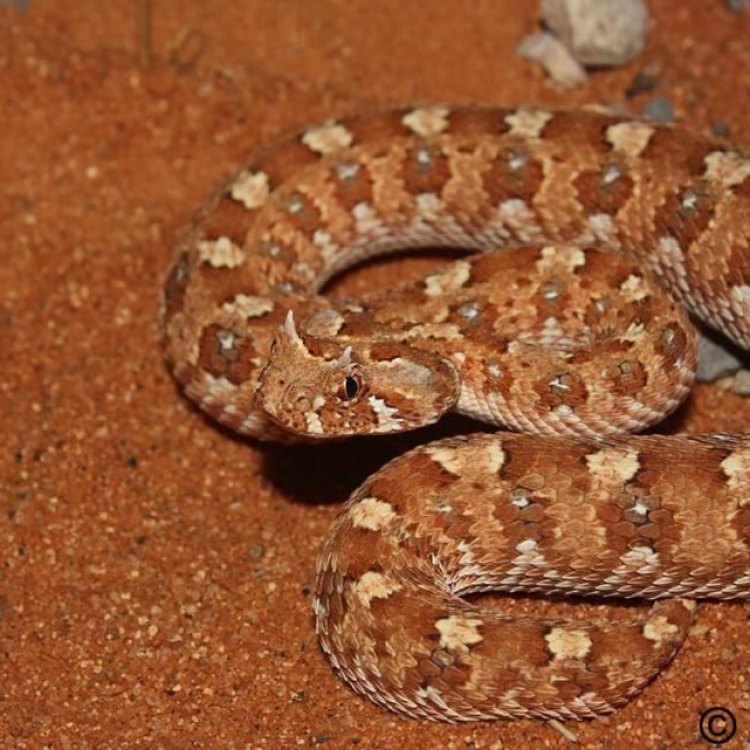
Horned Adder
- Adult Size: Small
- Average Lifespan: 10-15 years
- Reproduction: Oviparous (lays eggs)
- Reproductive Behavior: Mating occurs in the spring
- Sound or Call: Does not produce sound or call
- Migration Pattern: Non-migratory
- Social Groups: Solitary
- Behavior: Nocturnal and secretive
- Threats: Habitat loss and illegal collection for the pet trade
- Conservation Status: Data Deficient
- Impact on Ecosystem: Helps control rodent populations
- Human Use: None
- Distinctive Features: Horns above each eye, cryptic camouflage
- Interesting Facts: Horned adders are masters of camouflage and can blend in with their sandy environment. Their venomous bite is strong enough to immobilize their prey, which primarily includes small rodents. Despite their small size, horned adders are highly efficient predators. They have a unique defense mechanism where they bury themselves in the sand, leaving only their horns exposed to deter potential predators. The horns above their eyes are used for defense and to create a shadow over their eyes to protect them from the intense desert sun.
- Predator: Birds of prey, monitor lizards, and other snakes
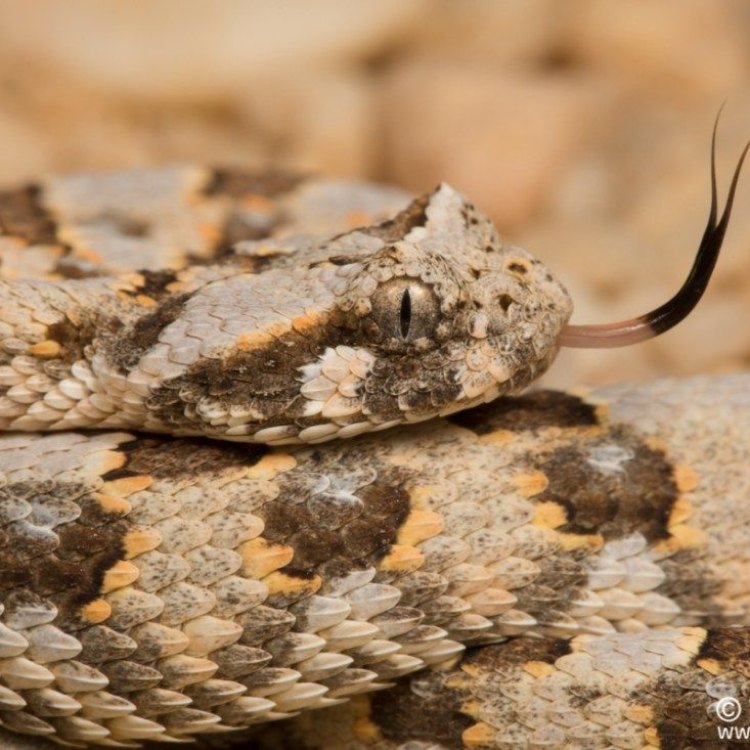
Bitis caudalis
Discover the Fascinating World of the Horned Adder: Africa's Master of Camouflage
South Africa is known for its breathtaking landscapes, diverse wildlife, and rich cultural heritage. But hidden within the beautiful deserts of this country lies a creature that often goes unnoticed – the horned adder. With their cryptic camouflage and unique features, these small and elusive snakes are truly fascinating creatures.The horned adder, also known as the conical or spiny adder, is a species of venomous snake native to Africa PeaceOfAnimals.Com. They are found in arid and semi-arid regions, specifically in South Africa, Namibia, and Botswana. Despite their small size, these snakes have captured the attention of many due to their distinct features and behaviors. In this article, we will take a closer look at these mesmerizing reptiles and uncover their secrets.
The Uniqueness of the Horned Adder
One of the most striking features of the horned adder is its horns, which are located above each eye. These horns are made of scales and are not actual horns, unlike those of a bull or a ram. However, they serve a crucial purpose for the snake – defense and camouflage. When threatened, the horned adder will raise its horns to appear larger and more intimidating to potential predators. This is a common behavior among many species of snakes, but what sets the horned adder apart is its ability to create a shadow over its eyes with its horns. This protects its sensitive eyes from the harsh desert sun, allowing it to remain undetected as it waits for unsuspecting prey Herrerasaurus.Another unique feature of the horned adder is its cryptic camouflage. These snakes have adapted to blend in with their surroundings, making them almost invisible to the untrained eye. Their sandy coloration allows them to blend in perfectly with the desert landscape, making it challenging to spot them. This ability to camouflage not only helps them hide from predators but also aids in hunting. Their prey, which primarily consists of small rodents, often fails to notice them until it's too late. This makes the horned adder a highly efficient predator despite their small size.
The Secretive Behavior of the Horned Adder
The name "adder" comes from the old English word "nadder," which means "serpent." This name is quite fitting for the horned adder, as they are nocturnal and elusive creatures. They are most active at night, making it challenging to study them in the wild. During the day, they remain hidden in the sand or their burrows to avoid the intense heat. Their solitary nature also contributes to their secretive behavior, as they prefer to live a solitary life rather than in social groups.The horned adder is also known for its cryptic behaviors, which are crucial for their survival. As mentioned earlier, their camouflage helps them avoid detection from predators and prey. They also have a unique defense mechanism where they can bury themselves in the sand, leaving only their horns exposed. This not only helps them hide, but also serves as a warning to potential predators – "Stay away, I am venomous."
Reproduction and Lifespan of the Horned Adder
The horned adder is a sexually dimorphic species, meaning that males and females have distinct physical characteristics. The males can easily be identified by their longer and more prominent horns, while females have shorter and less visible horns. They are oviparous, meaning that they lay eggs to reproduce. Mating occurs in the spring, and females will lay a clutch of 2-8 eggs in the sand. The eggs will hatch after about 50-60 days, and the hatchlings will be independent from birth.The average lifespan of the horned adder is 10-15 years, though there have been reports of some individuals living up to 20 years. This is a decent lifespan for a small snake, while some larger snakes can live for several decades. Their lifespan is greatly influenced by their environment and predator threats.
Threats to the Horned Adder
As with many other species, the horned adder is facing threats to its survival. The loss of their natural habitat due to human activities, such as urbanization and agriculture, is a significant issue. This habitat loss not only affects the horned adder, but also the prey species they rely on. Another threat to their survival is illegal collection for the pet trade. These snakes are highly sought after for their unique appearance, and many are taken from the wild to be sold in the exotic pet market. This not only disrupts their natural populations, but also puts them at risk of being mistreated and eventually abandoned by their owners.Conservation Status and Impact on Ecosystem
Due to their elusive nature, the horned adder is listed as Data Deficient on the IUCN Red List. This means that there is not enough data to accurately assess their population status. However, their population is believed to be stable, and they are not considered threatened currently. Nonetheless, conservation efforts are still important to ensure their survival in the future.The horned adder plays a significant role in its ecosystem as a predator. They help control the population of small rodents, which can cause damage to crops and spread diseases. By keeping the rodent population in check, the horned adder helps maintain a balanced ecosystem.
Human Use and Interesting Facts
Unlike many other species, the horned adder has no known human use. They are not used for their venom, as it is relatively weak compared to that of other venomous snakes. They are not commonly kept as pets due to their elusive nature, and they are not used for any traditional or cultural purposes.However, there are many interesting facts about the horned adder that make them a fascinating species. For example, they are one of the few snake species that do not produce sound or call. This is due to their solitary and secretive nature, as they do not need to communicate with other snakes. It is also worth noting that despite their small size, their venom is strong enough to immobilize their prey. This venom poses little threat to humans, but a bite from a horned adder should still be taken seriously and seek medical attention immediately.
Predators of the Horned Adder
As with any other species, the horned adder is not without predators. Birds of prey, such as falcons and eagles, are their main predators, as they have excellent eyesight and can spot them from above. Other snakes, including monitor lizards, are also known to prey on the horned adder. Even though they have a unique defense mechanism, they are still vulnerable to these predators, and their elusive behavior is their best defense.In Conclusion
In conclusion, the horned adder is truly a unique and remarkable species. From their distinctive horns, cryptic camouflage, and elusive behavior, they have evolved to survive in the harsh desert environment. Even though they face threats such as habitat loss and illegal collection, their population remains stable. As with all species, it is crucial to protect and conserve the horned adder to ensure its survival for generations to come. So the next time you visit the sandy dunes of Africa, keep an eye out for these masters of camouflage and appreciate the beauty of this underrated snake species.
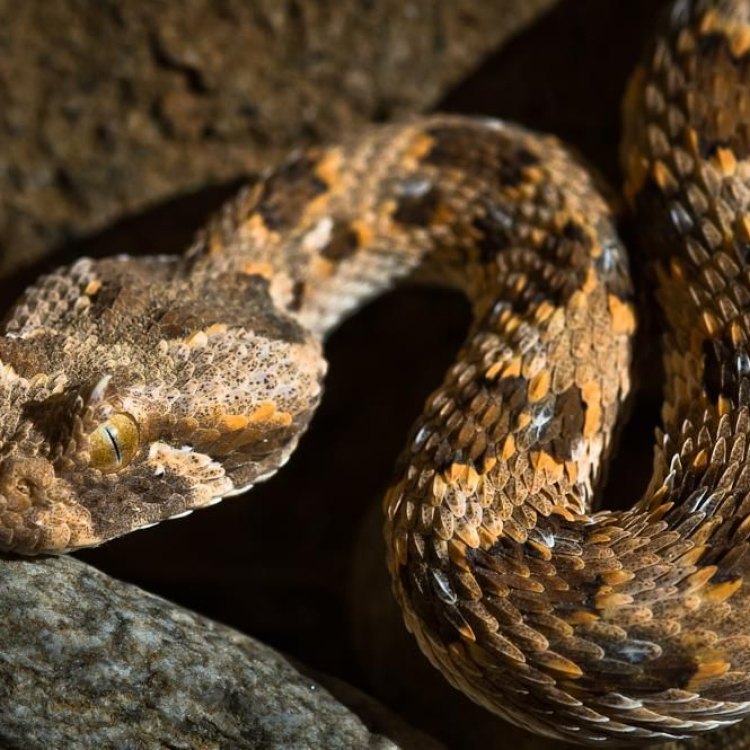
The Mysterious and Deadly Horned Adder of Southern Africa
Disclaimer: The content provided is for informational purposes only. We cannot guarantee the accuracy of the information on this page 100%. All information provided here may change without prior notice.



